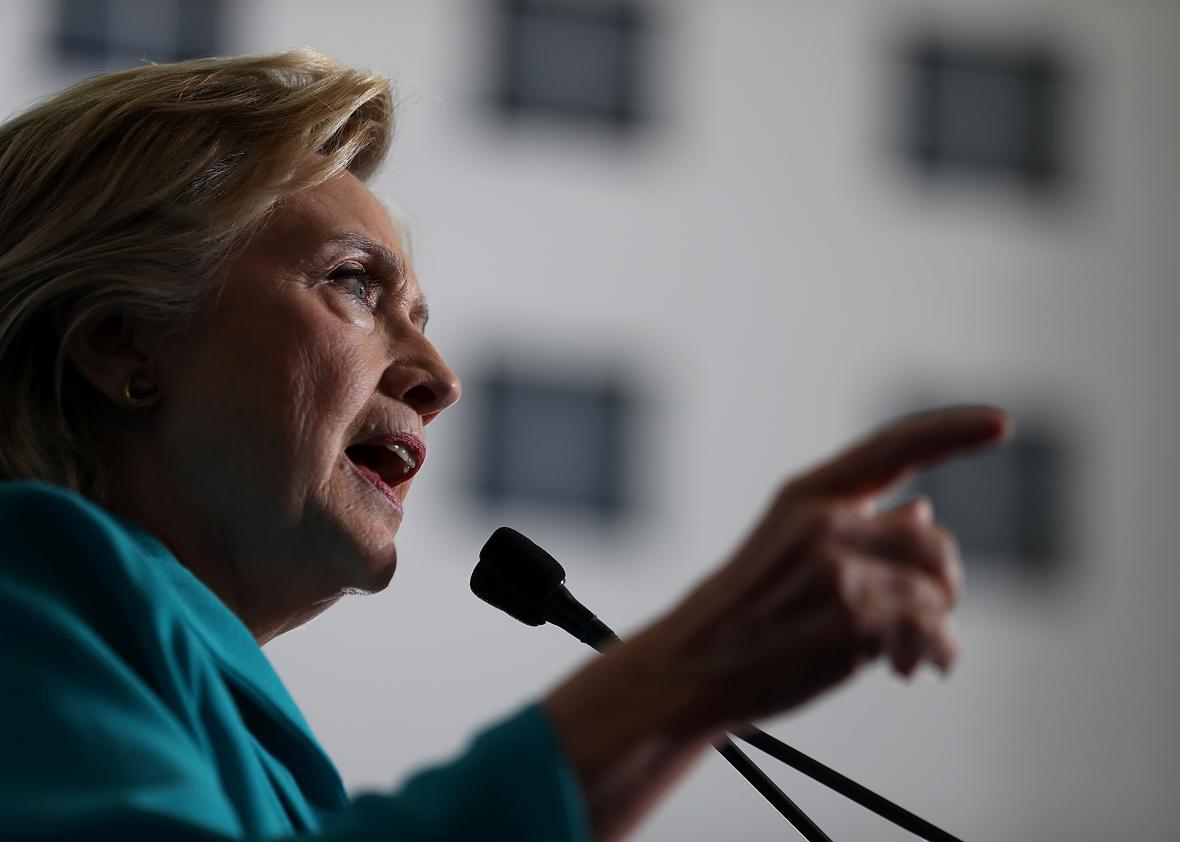Donald Trump has spent the past few days attempting to convince a certain set of voters—i.e. college-educated white ones—that he’s not the racist he’s been made out to be on the campaign trail. On Thursday afternoon, Hillary Clinton offered a rather brutal rebuttal to that claim by reminding everyone of all the evidence to the contrary.
“From the start, Donald Trump has built his campaign on prejudice and paranoia,” Clinton said at a rally in Reno, Nevada. “He is taking hate groups mainstream and helping a radical fringe take over the Republican Party.” She then went on to list—at length—the many times that Trump either espoused, embraced, or generally gave a platform to the ethno-nationalistic words and ideas of the conservative movement that calls itself the alt-right.
Clinton mentioned: Trump’s claim that an Indiana-born judge couldn’t do his job properly because of his Mexican heritage; his penchant for retweeting white supremacists; his failure to immediately disavow an endorsement from former KKK grand wizard David Duke; his praise for conspiracymonger Alex Jones; his hiring of Breitbart News’ Steve Bannon; his description of Mexican immigrants as rapists and criminals; his more recent portrayal of black communities as dystopian hellscapes; his call for a Muslim ban; his repeating of a long-debunked claim about thousands of Muslims celebrating in the streets of New Jersey on 9/11; his suggestion that Ted Cruz’s Cuban-born father was involved in the assassination of JFK; his birtherism; and his belief that President Obama “founded” ISIS. (And those are just the ones I managed to make a note of!)
“So no one should have any illusions about what’s really going on here,” Clinton said. “The names may have changed—racists now call themselves racialists, white supremacists now call themselves white nationalists, the paranoid fringe now calls itself alt-right—but the hate burns just as bright. And now Trump is trying to rebrand himself as well, but don’t be fooled.”
So, yeah, it turns out linking Trump to the loose coalition of far-right fringe groups one liberal watchdog has memorably branded “hipster Nazis” isn’t all that difficult. But more interesting than Clinton’s lengthy refresher on Trump’s troubling views on race was the way she framed her speech. It was evident that her audience was not the black or Hispanic voters who are already all too aware about what Trump thinks of them, but instead those same skeptical mainly white moderate Republicans and independents who her GOP rival is currently desperately trying to win over. Take this passage toward the end of her speech, for example:
You know, my friends, this is a moment of reckoning for every Republican dismayed that the party of Lincoln has become the party of Trump. It’s a moment of reckoning for all of us who love our country and believe that America is better than this. Twenty years ago when Bob Dole accepted the Republican nomination, he pointed to the exits in the convention hall and told any racist in the party to get out. The week after 9/11, George W. Bush went to a mosque and declared for everyone to hear that, Muslims love America just as much as I do. In 2008, John McCain told his own supporters that they were wrong about the man he was trying to defeat. Senator McCain made sure they knew Barack Obama… is an American citizen and a decent person. We need that kind of leadership again.
We can have our disagreements. And believe me, I understand that. I think that’s healthy. We need good debates. But we need to do it in a respectful way.
By drawing a bright line between Trump and the GOP nominees who came before him, Clinton is continuing her outreach to more mainstream Republican voters who remain uncomfortable with what they have seen and heard from Trump over the past year. The simple fact that, with 74 days until election day, both candidates are tailoring their appeals to the same set of voters—white Republican voters—suggests that Clinton does not have a lot to worry about.
